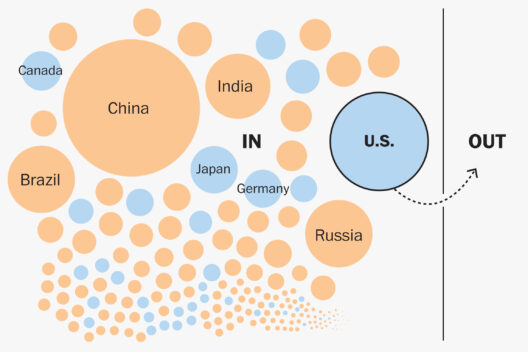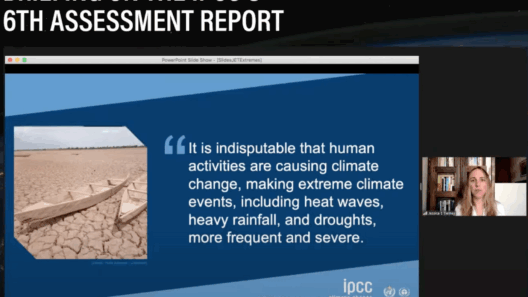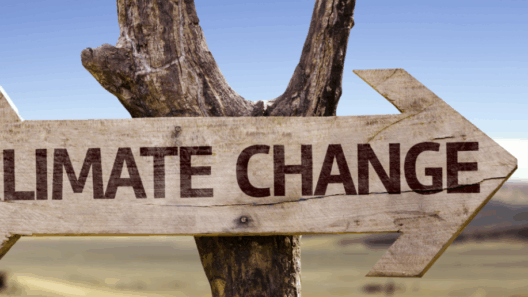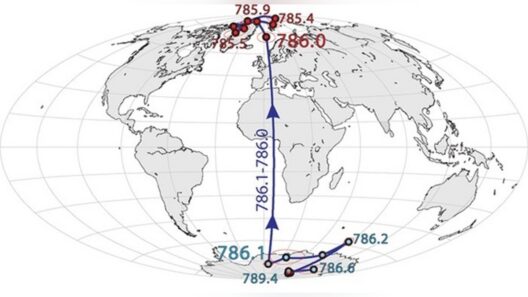Global warming represents one of the most pressing issues of our time, particularly for developing nations, often referred to as the Global South. While the phenomenon is a global concern, its ramifications manifest in varied ways across different regions. The Global South, encompassing countries in Africa, Latin America, and parts of Asia, faces unique challenges that are exacerbated by climatic changes. But how are these nations coping? Are they merely responding, or are they proactively carving out paths of resilience? These are essential questions that merit detailed exploration.
1. Understanding the Impact of Global Warming
To grasp how developing nations are coping with global warming, it is fundamental to understand the impacts they face. Increased temperatures, erratic weather patterns, and rising sea levels threaten agricultural yields, potable water sources, and biodiversity. Each of these elements is crucial for the livelihoods of millions. In many cases, smallholder farmers are at the mercy of shifting climatic conditions, which directly influences food security. Economic instability often follows, as agricultural productivity diminishes.
2. Vulnerability Factors in the Global South
The vulnerabilities faced by the Global South can often be attributed to a combination of socioeconomic factors. Poverty, inadequate infrastructure, and limited access to technology compound the effects of climate change. These nations often lack the resources necessary for robust climate adaptation strategies. Take, for instance, the coastal regions vulnerable to sea-level rise. The infrastructure there is often insufficient to withstand extreme flooding, leading not only to displacement but to significant economic losses as well.
3. Community Response and Resilience
Despite these daunting challenges, communities across the Global South are not sitting idly. Grassroots movements often emerge as powerful agents of change, pushing for local solutions that reflect the needs and capabilities of the population. Community-led initiatives aimed at sustainable farming practices, reforestation, and water management showcase the ingenuity and resilience of these nations. For example, agroforestry blends agriculture with forestry, creating biodiverse ecosystems that enhance productivity while also improving soil quality and water retention.
4. Role of Technology
Technology plays a pivotal role in assisting developing nations in their battle against global warming. Information and Communication Technology (ICT) is increasingly utilized to disseminate weather forecasts, advance agricultural techniques, and manage resources efficiently. Innovations such as solar energy systems are particularly transformative, providing renewable energy sources that can replace fossil fuels. The spread of mobile phone technology also allows farmers to share information and access markets, which can significantly boost their resilience against climate shocks.
5. Government Policy and International Aid
Governments in the Global South are gradually recognizing the importance of climate action. Many are developing national policies to combat climate change, often in alignment with international goals set by the Paris Agreement. However, the efficacy of these policies heavily depends on international aid and collaboration. Developed nations have a responsibility to provide financial assistance and technology transfer to enable developing nations to advance their climate agendas. Yet, the question remains: Do wealthy nations prioritize this altruism sufficiently?
6. Education and Awareness
Education plays a critical role in empowering individuals and communities to address climate change. Environmental education programs promote awareness about sustainability and adaption strategies in schools and local organizations. This cultural shift towards understanding climate change can have generational effects, fostering a more informed populace ready to adopt sustainable practices. In a world facing a climate crisis, the potential of educating the youth cannot be overstated.
7. The Challenge of Climate Justice
One cannot discuss the effects of global warming on developing nations without addressing climate justice. The Global South suffers disproportionately from the consequences of climate change, despite contributing significantly less to greenhouse gas emissions compared to industrialized countries. Thus, they face a unique challenge in advocating for their rights while seeking resilience and adaptation measures. Are these nations adequately represented in global forums, or are their voices drowned out by the larger political maneuvers of developed countries?
8. Future Perspectives
Looking ahead, a multi-faceted approach is necessary. As climate change continues to unfold, developing nations must employ a mix of innovative practices, international cooperation, and community engagement to fortify their resilience. This requires not only adaptive strategies but also a commitment from the international community to meet financial and technological needs head-on. As climate change accelerates, the lines between the Global North and South blur, and collective action becomes paramount.
In conclusion, the fight against global warming in developing nations is not solely about adaptation; it’s about equity, empowerment, and sustainability. While the challenges are considerable, the courage, ingenuity, and collective action of these nations offer glimmers of hope. As they navigate the tumultuous waters of climate change, one must ponder: can we alter the course of our climate future together, or will we continue to drift apart? The answer lies not just in the hands of policymakers but in the determination of every individual, community, and collaborative effort around the globe.








